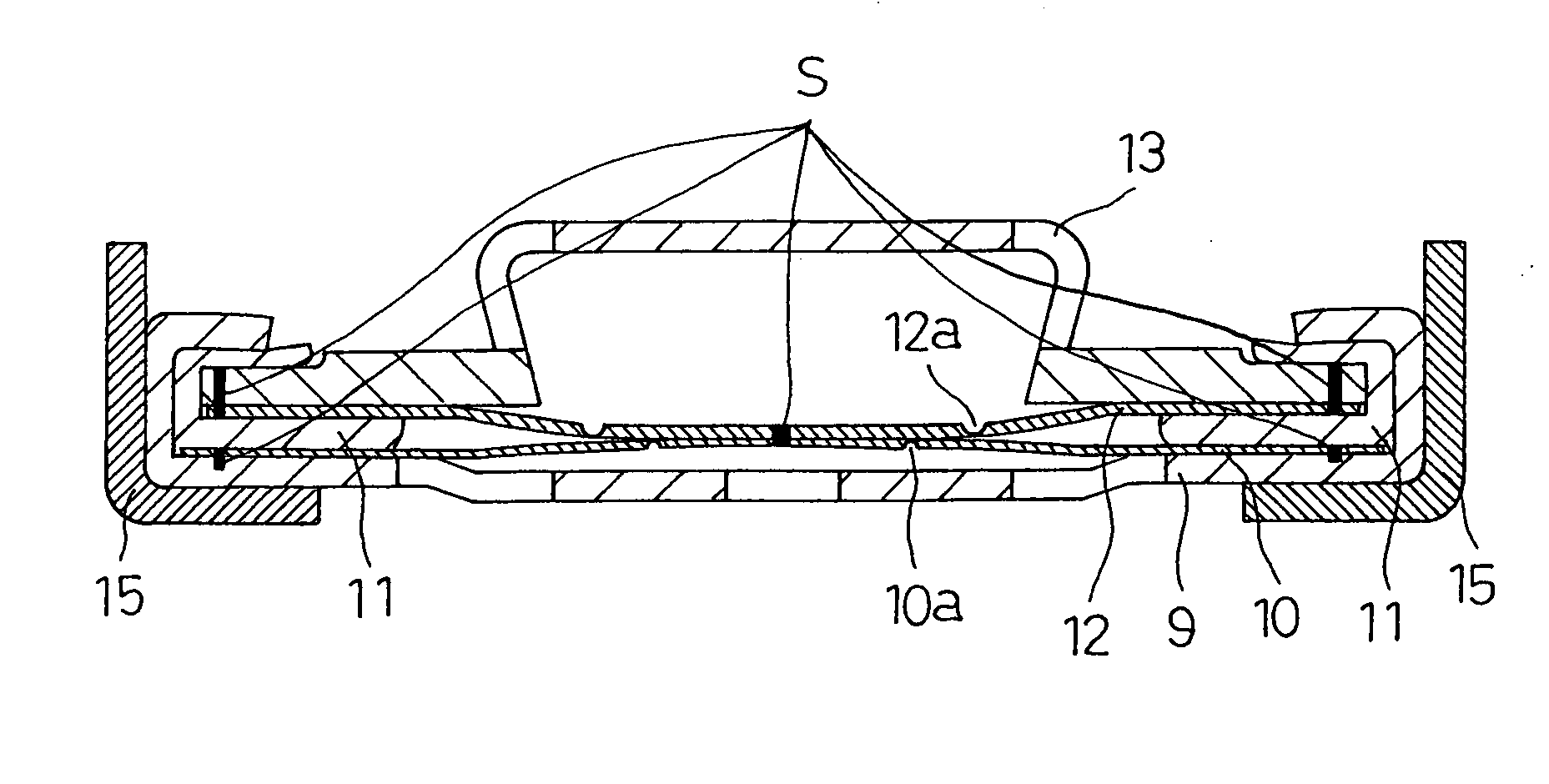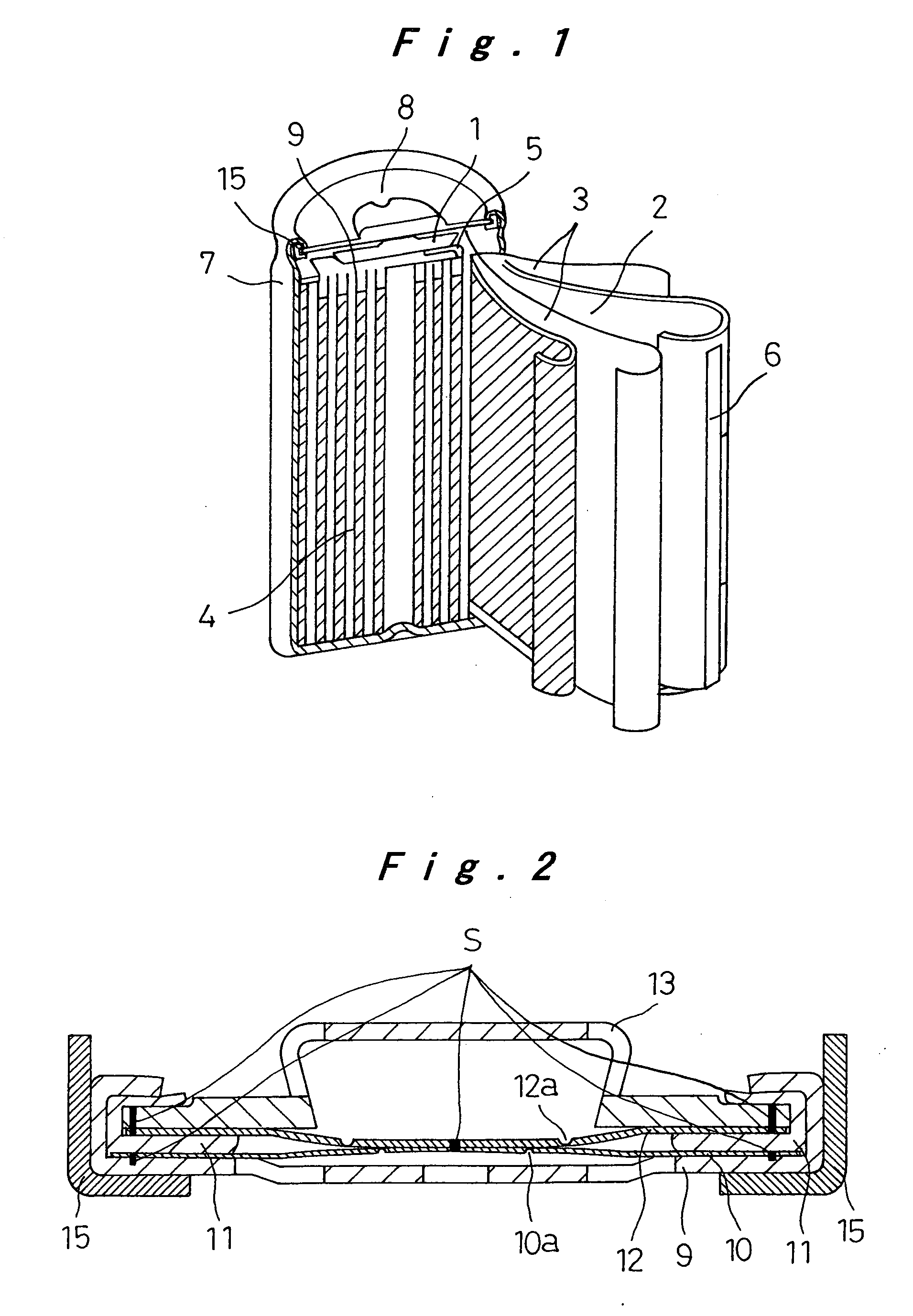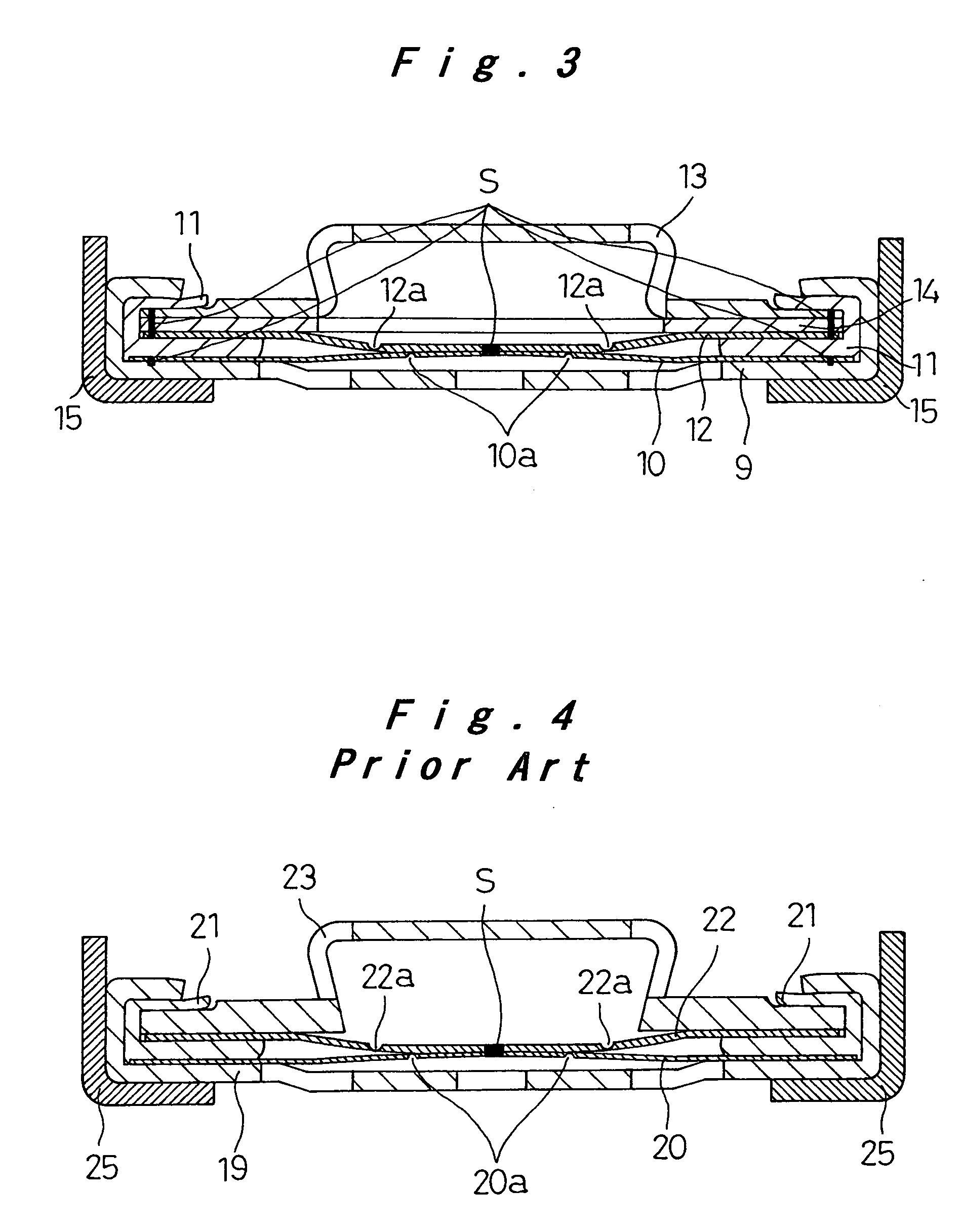Sealed rechargeable battery and manufacturing method of the same
a rechargeable battery and manufacturing method technology, applied in the direction of batteries, sustainable manufacturing/processing, cell components, etc., can solve the problems of increasing the contact resistance of internal parts, reducing the crimp strength, and losing the resiliency of polypropylen
- Summary
- Abstract
- Description
- Claims
- Application Information
AI Technical Summary
Benefits of technology
Problems solved by technology
Method used
Image
Examples
example 1
[0037]FIG. 2 shows the closure assembly in the sealed rechargeable battery of the invention. The closure assembly 8 of FIG. 2 is fabricated as follows: Dish-like metallic filters 9 with a plurality of apertures are produced from aluminum sheet by press-forming. Aluminum discs of 0.15 mm thickness are punched out, and circular thin portions 10a are created in the center of the discs by imprinting, to produce metallic foils10. Inner gaskets 11 with predetermined dimensions are produced from polybutylene terephthalate (PBT) by injection molding. Aluminum discs of 0.15 mm thickness are punched out, and C-shaped thin portions 12a are created in the center of the discs by imprinting, to produce metallic safety vents 12. Metallic caps 13 are produced by press-forming and nickel-plating iron sheet to a thickness of about 3 μm. These parts that will make up the closure assembly 8 are then assembled as follows: The metallic foil 10 is placed on the seat of the metallic filter 9, and laser-wel...
example 2
[0042]FIG. 3 shows another closure assembly 8 of the sealed rechargeable battery of the invention. The battery itself is produced similarly to Example 1. The closure assembly 8 includes a disc-like metallic spacer 14 as shown in FIG. 3, made by press-forming a nickel-plating stainless steel sheet to a thickness of 3 μm. The metallic spacer 14 is joined to the metallic cap 13 at eight circumferentially equally spaced weld joints S in the periphery by resistance welding. These joined parts are laser-welded to the metallic safety vent 12 at eight circumferentially equally spaced locations S in the periphery. These joined parts are then inserted onto the resin inner gasket 11 such that the metallic safety vent 12 is in contact with the upper surface of the gasket. Apart from the above difference in the closure assembly, Example 2 of the battery is the same as Example 1.
PUM
| Property | Measurement | Unit |
|---|---|---|
| Electrical resistance | aaaaa | aaaaa |
| Temperature | aaaaa | aaaaa |
| Temperature | aaaaa | aaaaa |
Abstract
Description
Claims
Application Information
 Login to View More
Login to View More - R&D
- Intellectual Property
- Life Sciences
- Materials
- Tech Scout
- Unparalleled Data Quality
- Higher Quality Content
- 60% Fewer Hallucinations
Browse by: Latest US Patents, China's latest patents, Technical Efficacy Thesaurus, Application Domain, Technology Topic, Popular Technical Reports.
© 2025 PatSnap. All rights reserved.Legal|Privacy policy|Modern Slavery Act Transparency Statement|Sitemap|About US| Contact US: help@patsnap.com



